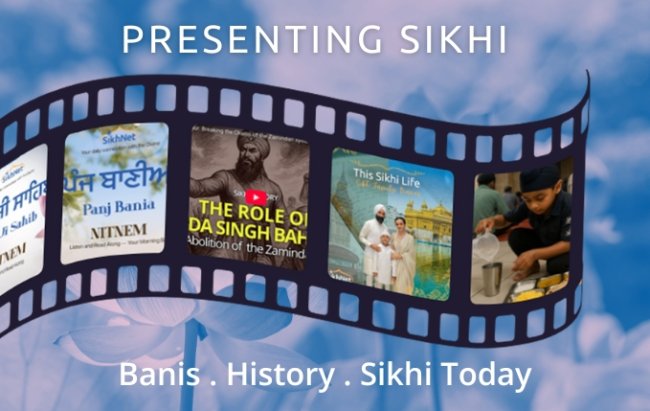It is only mid-December and there’s a chill in the air. When I was a child prancing around in Shimla (nee Simla) in India, it was the most exciting season of life for a preteen in snow clad hills of that beautiful little town.
It was winter then but with nary a chill in the heart. Now there is a freeze that has little to do with the impending snow tonight. The excitement has been ousted and replaced by winter’s melancholy.
It has been almost 30 years since the Indian government first went on a rampage to subjugate its more than 20 million Sikhs by a devastating attack that destroyed critical parts of their premier place of worship – the Harmandar (Golden Temple) at Amritsar in 1984. Both preceding and subsequent to the attack were extrajudicial killings and massive detentions of Sikhs by India’s security forces for over a decade.
In between, came the looting, raping and killing of thousands of Sikh men, women and children – still unaccounted – across major cities of India in well planned and organized government-backed attacks that many independent reports label as attempted genocide of a people. In the intervening three decades more than ten “governmental” investigations have found less than a handful responsible for the several thousand murders committed over two days.
Justice and recompense remain non-existent even today.
But such conclusions as I have thumb nailed here do not augur well for a nation’s ambitious global goals and hunger for recognition as the world’s “largest democracy,” hence a far reaching lavish effort of publicity and cosmetic restoration.
When India became an independent nation in 1947 over 40 percent of the officer corps of its armed forces (the third largest in the world today) consisted of Sikhs. In the first 60 years of its independent existence India never found a single Sikh fit enough to hold the office of Chief of the Army. But in this last one decade alone India appointed two Sikhs to that office, following the first ever Sikh Prime Minister of the country. A Sikh is in charge of India economic planning and another is the public face of its international diplomacy
Are these public relations stunts? Of course! They are welcome, nevertheless. The Indian official narrative on dealing with the genocidal 1984 pogroms against the Sikhs is that whatever happened was minor, is unfortunate and it was so long ago; it would be so much better for the world and the nation if we could bury that past and move on for the nation is on a fast track forward. The central idea is that there is no need, therefore, to remember the events, consecrate them or fix the damage done
Yes, we do need to make peace with the past. But the past needs and deserves to be settled – a smoldering fire is not entirely dead and won’t stay buried without giving periodic trouble.
Look at some such lasting fires that remain unconsumed across the world:
The Armenians are still looking to bury the genocide that claimed over a million of their people almost a hundred years ago, while the Turks are just as desperately denying it ever happened. The Jewish Holocaust ended 68 years ago but the Jews are still consumed by efforts to identify the guilty, even though many who were culpable are either dead or too old to bring to justice. During the Caucasian War (1817-1864) Russian armies razed the countryside and killed or deported entire communities of Circassia. Now that Russia wants to hold the next Olympiad in that area it is finding that people still have not found peace in subjugation and security for the games might well become a problem.
The prophecy of Santayana haunts me that those who do not remember the past are condemned to repeat it. Yet, hope springs eternal. And that’s the way it ought to be as long as it doesn’t always die young.
Over the past 25 years, 15 countries have adopted a very different paradigm with varying success to emerge out of such home grown crises. Via over 20 Commissions these nations have followed an imaginatively constructive path to forge peace among their many restive minorities – the way of a Peace and Reconciliation Commission.
I won’t offer an exhaustive list here but these countries have spanned the globe and the human cultural experience; they include Brazil, El Salvador, Argentina, Ecuador, Czech Republic, Poland, Ukraine, even India’s neighbor Sri Lanka, and more. A prominent nation with a long troublesome history of apartheid was South Africa and its most prominent exponent of a Reconciliation Commission was Nelson Mandela who died just days ago. Are matters settled now? The Blacks and Whites of South Africa are not quite equal partners in nation building yet but they are working at it largely in peace and hope.
We must be driven by our hopes, not by our fears or failures. The purpose of such panels is not retribution but to put the past behind and bury it. It means facing the truth honestly. Confessions of mistakes and miscalculations are seen not so much to punish but to correct so that erstwhile enemies can sit, break bread together, and dream of a common future. The idea is not to gloss over events with a patina that might crack when it is barely dry but to knit together a new fabric from the various parts where an integrated whole becomes greater than the sum of the parts.
I am sure the process inevitably continues to expose excesses and stupidities by both sides. Honesty of confession is not compromised. Only then is repair possible.
If such an honest process was held today in India on the events of 1984 I bet that neither the Indian government (Indira Gandhi and her advisors) nor the Sikh leadership would come out smelling like a rose but the nation would be the stronger for it and more sure-footed in its march forward.
In many writings, I have advocated such a path for over a decade but the thread of the argument and the serious process that is necessary get lost in the heat of passionate differences.
In the meantime I look at the many steps that the Indian government has undertaken. Let us enumerate some. Here are some glorious firsts:
India has a Sikh Prime Minister (Manmohan Singh, an economist with a world class reputation); two generals (J.J. Singh and Balkar Singh) were selected to command India’s Army, India’s planning czar (Montek Singh Ahluwalia) and the public face of its diplomacy (Hardeep Singh Puri), and they come with stellar competence and reputation.
Given the limits of my reach way outside India, and the fact that I am admittedly saddled with many biases, I wonder if and how India really discovered the ability of Sikhs all of a sudden after a good sixty years of blindness. And then I wonder if these appointments were mainly cosmetic or did they have an honest purpose? This is by no means said to diminish these Sikhs or their abilities.
The ability of Sikhs was never the question. But I wonder if what got them the opportunity was not so much their obvious ability as their pliability. This is a loaded statement that would rile many readers; that’s why I emphasize it here.
And I include in the list Giani Zail Singh, the epitome of pliability, who was the nominal President of India on whose watch the events of 1984 occurred and elicited not a murmur of protest from his lips.
For all I know many of these Sikhs may operate from a base of moral ambiguity and pliability and yet serve the community and its larger cause. That surely bothers me. Let me also be clear that pliability must not be always underestimated; it may not always be a sin; it may even be a virtue. Sure it is often a weakness but can just as often be strength. Look for instance at the track record of Diwan Kaura Mull, a legendary friend of the Sikhs who also had a senior position with their archenemy – the Mughal rulers at the same time in the immediate post Guru period when Sikhs and Mughals were active enemies in war.
I firmly believe that these very able Sikhs have been appointed and function in such a black box that these attempts by the Indian government to include Sikhs come across at best as anemic and calculated to mislead rather than correct a historic injustice. What is needed here is some transparency.
Perceptions matter almost as much as the reality. As an aside, the assertive leadership style and ability of one leading political contender in India today, Narendra Modi, are not in question; his moral compass is the issue that disqualifies him in my opinion.
I would argue similarly about the prominent Sikhs that I have listed here. I adore their competence and integrity at work but their suspected moral compass leaves me cold.
Surely, the appointments of these Sikhs in visible positions are important and must not be swept aside. But to me they looks calculated to hide and mislead rather than to reform and correct. These significant attempts can, if accompanied by a Truth and Reconciliation Commission, speak of an honest change of heart. And that’s what’s needed.
The chill wind in India comes from the heart. It stems not from any lack of competence and ability of India’s Sikh leaders but from the paucity of moral core, principle and compassion in their record.
December 15, 2013

